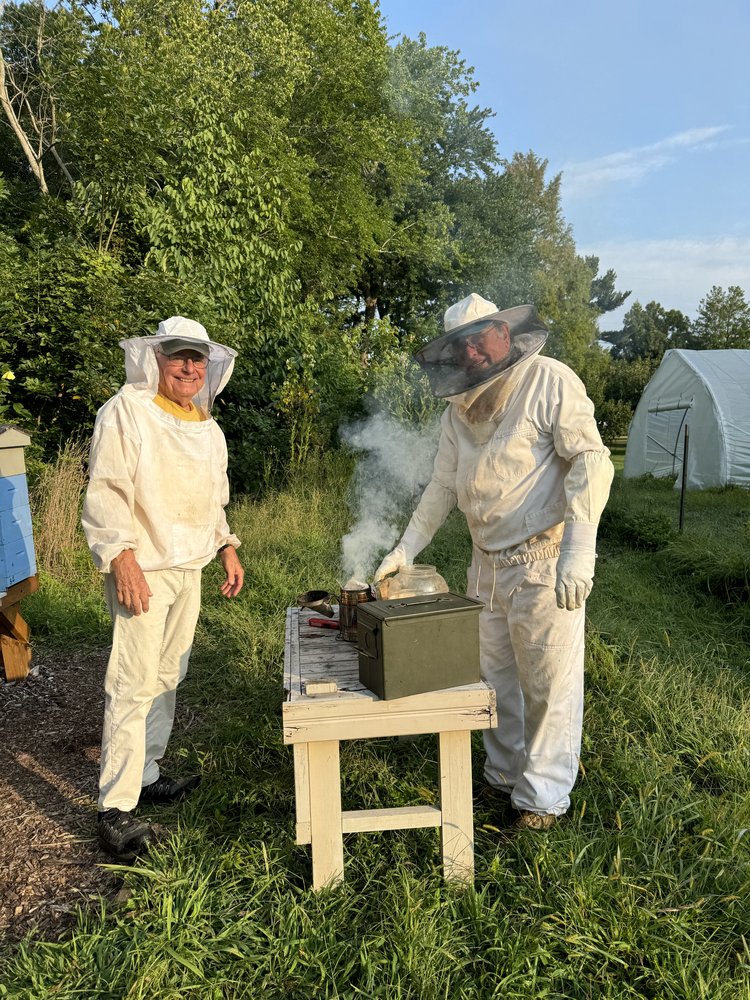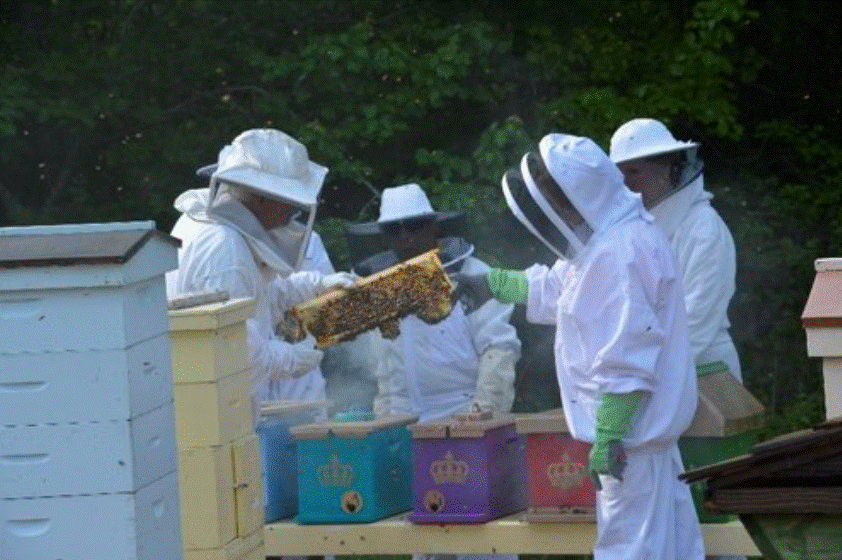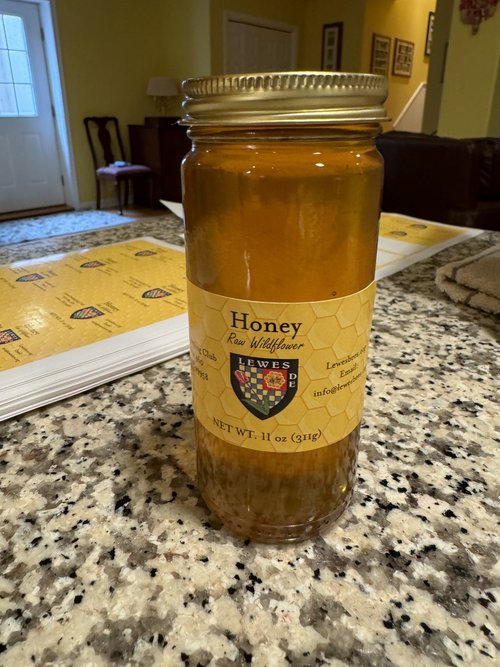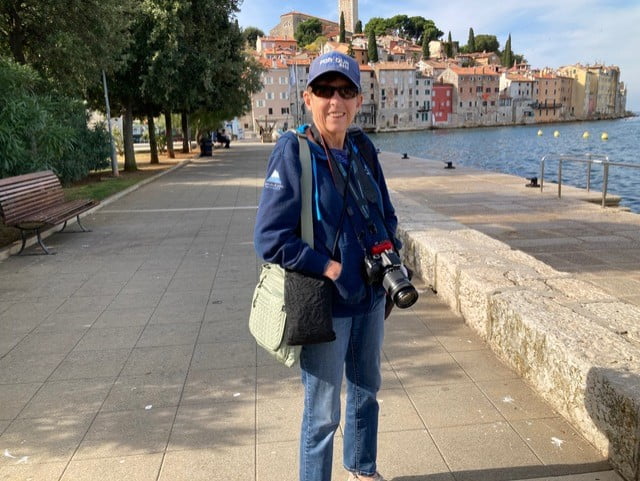Well-used statistics help us see the big picture. Here’s one the members of the Lewes BeeKeepering Club know well. Eight-five percent of the plants on earth require bees and other pollinators to exist*. That’s a pretty big number. (And how many of us non-bee-folk knew that it was anywhere near so big?)
And here’s another question. What do almonds, coffee and blueberries have in common? They all need honeybees to produce. Honeybees, like other pollinators, play a vital role in our food chain, pollinating the trees and plants that produce 30 percent of the foods we eat, including strawberries, apples, cucumbers, and avocados. In other words, one out of every three bites of food Americans consume comes from a plant pollinated by bees or other pollinators.
The mission of the Lewes Beekeeping Club is “to teach the art and science of beekeeping and to educate the community about the importance of honeybees and other pollinators in the environment.”



According to the club’s website, many pollinators are under assault. Loss of habitat and the introduction of harmful bee parasites have caused significant declines in many honeybee populations. Scientists believe that some of the decline is the result of environmental factors such as the use of pesticides and herbicides that the bees ingest and bring back to the hive. The good news is that, fortunately, there are some simple steps we each can take to help.
The club advocates reducing or stopping the use of harmful pesticides such as those containing neonic and planting native pollinator-friendly plants like Black-eyed Susan, New England Astor, Butterfly Milkweed and Cutleaf Coneflower.



The club is always on the lookout for bee advocates and those who are interested in helping the club maintain its hives, each of which does contain more than 60,000 bees. Club members monitor them year-round by feeding them in winter, watching for overcrowding in the spring, harvesting honey in the summer, and monitoring hives for harmful pests throughout the year.
For those interested in learning a bit more, here are a few nuggets to start with:
- Honeybees have an interesting life cycle. Honeybees are eusocial, meaning they live in a cooperative group where, typicall, one female and several males are reproductively active, and the nonbreeding individuals care for the young or protect and provide for the group.
- Adult bees are divided into a queen, female workers, and male drones. The queen will leave the hive only once to mate with several drones, storing sperm in her spermatheca to last her lifetime. In order to rear and defend the eggs lain by the queen, worker bees develop stinging mechanisms, pollen baskets, dance languages and labor divisions. Tasks are divided according to age and colony needs. Younger worker bees tend to the queen, and older worker bees forage, construct wax cells, convert nectar into honey, clean cells and guard the hive. Ideally, a healthy hive is a collection of overlapping generations.
- Honeybees have a short life span – from one to three months on average. A bee colony has approximately 60,000 bees, but only one can be the queen. Her job is to mate with several male bees (drones) from other hives and lay approximately 2,000 eggs daily, from about April through September.
Enjoying nature, socializing, making a difference – these beekeepers have found the recipe to make an incredible local club. For those of us who want to make a difference but haven’t yet found our nitch, buzz on by this hive to see if it’s a fit for you. Those interested in becoming beekeepers can review details by downloading the Lewes Beekeepers MEMBERSHIP FORM.
*https://www.lewesbees.org/
By Mary Jo Tarallo, Resident Journalist

Mary Jo Tarallo spent much of her career in public relations with various non-profits and spent 40 years involved with the ski industry as a journalist, public relations director for a national trade association and as executive director of the Learn to Ski and Snowboard initiative. Prior to her ski industry involvement she worked for the Maryland International Center in Baltimore and United Way of Central Maryland. She won a Gold Award for TV programming for a United Way simulcast that starred Oprah Winfrey. She has been cited for her work by numerous organizations. Mary Jo grew up in Baltimore, attended the University of Maryland and Towson University, lived in Washington, DC for 21 years and has been a full time resident of Rehoboth Beach and Milton since May 2019.
